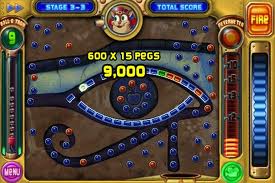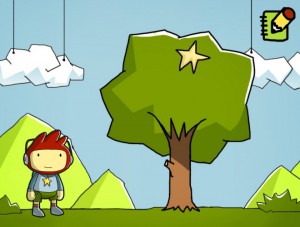 The game I’m working on is really really fun. When I first played it I had near orgasms of delight. The problem is, it’s really really hard. I want to give players orgasms of delight but to experience them they have to learn a lot of stuff. I’ve decided to try to solve this problem with a false unicorn horn.
The game I’m working on is really really fun. When I first played it I had near orgasms of delight. The problem is, it’s really really hard. I want to give players orgasms of delight but to experience them they have to learn a lot of stuff. I’ve decided to try to solve this problem with a false unicorn horn.
No one I ever try to explain this to has ever seen The Last Unicorn (which is a shame) so I will fill you in on what I’m talking about. In the movie there is a last unicorn. It also contains Mommy Fortuna, a relatively evil witch who keeps a traveling sideshow of rare animals. Most of her animals are very humdrum but she uses a magic spell to make it appear to onlookers as if they are manticores and satyrs. The pertinent idea here comes up when Mommy Fortuna captures our Unicorn. Since unicorn horns are invisible to the general public she magically applies a false one. This is a great idea that I want to steal.
Since the game is so hard players will never learn how to play it if I just explain all the buttons and throw them in. Red-faced, they will exclaim “this is just a horse” to each-other between quaffs of ale, have a good laugh, and then move on. I need to apply a false horn so that people will play the game even when it is not at its orgasm inducing peak in order to bring them great joy later on when they can see the horn for real. I think there are a couple ways to do this and I want make use of as many as I can. More ideas are appreciated, there is a comment feature on this blog.
 Abuse of Dopamine Receptors. The ultimate false unicorn horn, behavioural psychologists have done a pretty good job of ferreting out the strings attached to our brain that make us dance and have called them dopamine receptors. Things that our brain loves: bright colours, intermittent rewards, a feeling of progress, close calls, basically Peggle. Basically our brains were put here on earth to play Peggle.
Abuse of Dopamine Receptors. The ultimate false unicorn horn, behavioural psychologists have done a pretty good job of ferreting out the strings attached to our brain that make us dance and have called them dopamine receptors. Things that our brain loves: bright colours, intermittent rewards, a feeling of progress, close calls, basically Peggle. Basically our brains were put here on earth to play Peggle.
Our brain loves these things because they are hints that we are learning something. And god DAMN do we love to learn. The problem with Peggle is that any player-skill is swamped out by the random element. So, like gambling, it’s just a trick. An illusion. It tickles the brain making us feel like we’re learning something and improving but we aren’t. The horn on the unicorn is a fake. There are a lot of other games with big fake horns, like Farmville, WoW, and Drop7 (actually I’m willing to budge on Drop7 if someone can find me a player that reliably gets very high scores).
So anyway, I have to get some fake learning into my game so I can get people to the real learning. I’m not really very good at this and it will take some serious study. Time to download WoW I guess.
 The other way that I can think of to paste a false horn on this unicorn is the “puzzle mode” strategy. The idea here is to provide a totaly different game mode from the one I want players to eventually play. But a game mode that has a learning curve. You can think of it as a very extended tutorial. Or like an upside-down Scribblenauts. Scribblenaut’s orgasms came from the sandbox mode. Making Scribblenauts the best kind of game. Everyone could see the horn right from the beginning. But you can’t really sell toys right now. Well not un-musical ones anyway. So they had to affix a false horn to get we who aren’t good without a reward structure to fondle the real horn.
The other way that I can think of to paste a false horn on this unicorn is the “puzzle mode” strategy. The idea here is to provide a totaly different game mode from the one I want players to eventually play. But a game mode that has a learning curve. You can think of it as a very extended tutorial. Or like an upside-down Scribblenauts. Scribblenaut’s orgasms came from the sandbox mode. Making Scribblenauts the best kind of game. Everyone could see the horn right from the beginning. But you can’t really sell toys right now. Well not un-musical ones anyway. So they had to affix a false horn to get we who aren’t good without a reward structure to fondle the real horn.
I have the opposite problem but want to take the same approach. I’m planning to have a fairly long set of puzzles that are more in line with “permute choices until you win” style of play like Splitter or Angrybirds. Which give you all the skills you need to play the more Aramdillo Runy, Contraptiony game later on.
I have hacked out a small level-set to try this out on just a very few testers and the results have been. Well, lackluster is the word. So I definitely have a road ahead. Fortunately the puzzle design was pretty crappy and it had no Peggle elements so I might still manage to weave a horn that will wow the beer-soaked crowds. I can’t quite remember how The Last Unicorn ends but I’m pretty sure Mommy Fortuna comes out on top in the end.


Comments
10 responses to “False Unicorn Horns”
So it sounds like you are trying to separate the end experience into distinct components, that can be combined or built upon to create the final experience you want. That makes sense at a fundamental level. It’s the way we are taught growing up. First the alphabet, then words, then sentences, until eventually you have a teen reading Twilight novels.
So, I suppose the biggest question is can you make these individual elements fun? The reward system route is definitely a path to it, though if they aren’t fun by themselves, you may alienate those who aren’t as interested in the reward side.
As to the reward system itself, is there anyway you can turn it into an integral game mechanic? Some of the games that we have spent the time to developed great skills on, like DDR for me, or possibly Counterstrike for you, have given that boost of adrenaline throughout the experience. I probably wouldn’t have kept dancing if I didn’t have my flashing arrows, and you may not have kept shooting if you didn’t have the burst of adrenaline each time you dropped someone with a pistol.
To ham-handedly tack it onto the Last Unicorn analogy, the problem I always had with Mommy Fortuna’s fake horn was that it wasn’t in the same place as the first. You put the horn in the wrong spot on the skull and it won’t have the support to be used to dig for grubs, or pierce virgins, or whatever it is unicorns do daty-to-day. It would make more sense if it formed the core of the true horn, so as people advance past the fake one, the new will take it’s place naturally.
Yes, exactly. I want to be able to hold two variables constant and let people experiment with the remaining one. At some point I’d like to do a post on that idea and theories on how people learn systems in general.
There is definitely a lack of moment to moment fun. Contraption also has next to no moment to moment fun. How would you add it to Contraption if you had to? Sparkly lights whenever you connected two rods? Making connecting rods challenging in some arcadey way?
Hmmm…. Very good question. For a creation game like Contraption it is tricky. Let me think about that one.
OK, at the basic level, yes adding a glow + a happy sound for each connection ( with different feedback depending on the connection) would be a good for the immediate player reaction on the dopamine side. It doesn’t have to be fancy, but it lets the player know they did something good. And you could have different pitch ones for breaking connections too.
Overall you could add a point system for creating using a minimum number of pieces/connection that would give the achievers something tangible to strive for. I don’t like that for this sort of game though, as I could see it seriously stifling creativity.
For something a little more tangible and Contraption specific, you could have a smaller sub-window that is a copy of the greater. Immediately upon each connection being made or broken, the contraption in smaller window starts running, either failing madly, or walking off a cliff. or whatever the incomplete machine does. There’s no penalty for this and it gives the player immediate feedback as to what their connection has created. It also encourage experimentation as the user may see the contraption do something they never expected.
It would probably double the processing footprint, and require screen real estate, which might be issues. And you’d want to give the player the option to turn it off if they found it distracting. But it would give the player a moment-to-moment result of their actions.
Addendum:
The sub window could be tinted a certain colour based on how close the current machine has moved the object to the goal. Red->Green, based on percentage, though you could have a visible numerical value too. When it hits the goal, the window goes completely green with a golden glow around it, letting the user know its OK to start their machine.
You could also have the contraption in the sub-window sped up or allow the user to select a speed for faster feedback.
Wait, that’s a really really good idea. It wouldn’t be a sub-window, it would be a transparent version of the current contraption that started whenever you changed anything.
You tried Toribash right? Just like that!
Thast’s a really really good idea. That at least has to be prototyped. It doesn’t eat up any processor time because in ‘build’ mode the processor isn’t doing anything.
Also I really wish that blogs had the option of editing comments so I could cleanup the spelling mistakes after posting….
Long after the fact, but I was watching this today, and the tutorials component made me think of this post again: http://www.escapistmagazine.com/videos/view/extra-credits/2454-Easy-Games
And the subsequent one talks very much about the false horn: http://www.escapistmagazine.com/videos/view/extra-credits/2487-The-Skinner-Box
I should really watch more Extra Credits. They say a lot of sensible things. Although their tone is a little more preachy than I would like.